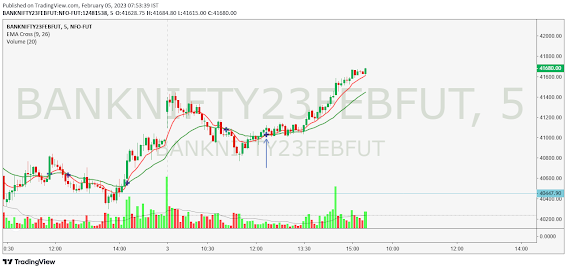Bullish Candlestick
A Bullish candlestick is a type of candlestick pattern in technical analysis that signals a potential upward price movement. The pattern is formed when the closing price of an asset is higher than its opening price, and is considered an indication of bullish sentiment in the market.
The real body of a bullish candlestick is typically white or green and is longer than the real body of a bearish candlestick. The length of the upper shadow, if present, is also typically short. Bullish candlesticks are often used by traders to identify potential buying opportunities and to confirm an uptrend in the market.
Bearish Candlestick
A Bearish candlestick is a type of candlestick pattern in technical analysis that signals a potential downward price movement. The pattern is formed when the closing price of an asset is lower than its opening price, and is considered an indication of bearish sentiment in the market.
The real body of a bearish candlestick is typically black or red and is longer than the real body of a bullish candlestick. The length of the lower shadow, if present, is also typically short. Bearish candlesticks are often used by traders to identify potential selling opportunities and to confirm a downtrend in the market.
Doji candlestick
Doji is a term used in technical analysis to describe a candlestick pattern in stock charting. It signals indecision or a potential reversal in price direction and is formed when the opening and closing prices of an asset are the same or nearly the same.
The pattern is considered a bullish or bearish reversal depending on preceding price action and future price movements.
It is used by traders to identify potential buy or sell signals in the market.
Hammer candlestick
A Hammer candlestick is a bullish reversal pattern in technical analysis that is formed when the price of an asset declines significantly, but then rallies to close near its opening price. The pattern is characterized by a long lower shadow, which is at least twice the length of the real body, and a small real body near the upper end of the trading range, with little or no upper shadow.
The long lower shadow indicates that the bears pushed the price down, but the bulls took control and pushed the price back up, closing near the opening price. Traders interpret this pattern as a potential buy signal, indicating that the trend is likely to reverse and the price is likely to rise.
Inverted Hammer Candlestick
The Inverted Hammer candlestick is a bullish reversal pattern in technical analysis that is formed at the end of a downtrend. It is characterized by a small real body near the lower end of the trading range, with a long upper shadow that is at least twice the length of the real body, and little or no lower shadow.
The long upper shadow indicates that the bears pushed the price down, but the bulls took control and pushed the price back up, close to the opening price. Traders interpret this pattern as a potential buy signal, indicating that the trend may be about to reverse and the price is likely to rise. However, the reliability of the Inverted Hammer signal is increased when it is confirmed by a subsequent price increase.
Shooting star candlestick
A Shooting Star candlestick is a bearish reversal pattern in technical analysis that is formed at the end of an uptrend. It is characterized by a small real body near the upper end of the trading range, with a long lower shadow that is at least twice the length of the real body, and little or no upper shadow.
The long lower shadow indicates that the bulls pushed the price up, but the bears took control and pushed the price down, close to the opening price. Traders interpret this pattern as a potential sell signal, indicating that the trend may be about to reverse and the price is likely to fall. However, the reliability of the Shooting Star signal is increased when it is confirmed by a subsequent price decrease.


Difference between Shooting Star and Inverted Hammer
A shooting star and an inverted hammer are both bearish reversal patterns in technical analysis.
A shooting star occurs after an upward trend and is characterized by a small real body at the lower end of the price range, with a long upper shadow and little or no lower shadow.
An inverted hammer, on the other hand, occurs after a downward trend and is characterized by a small real body at the upper end of the price range, with a long lower shadow and little or no upper shadow.
In summary, the main difference between the two patterns is their formation after an upward or downward trend and the location of the small real body.
Hanging Man candlestick
The Hanging Man candlestick is a bearish reversal pattern in technical analysis that is formed at the end of an uptrend. It is characterized by a small real body near the upper end of the trading range, with a long lower shadow that is at least twice the length of the real body, and little or no upper shadow.
The long lower shadow indicates that the bulls pushed the price up, but the bears took control and pushed the price down, close to the opening price. Traders interpret this pattern as a potential sell signal, indicating that the trend may be about to reverse and the price is likely to fall. However, the reliability of the Hanging Man signal is increased when it is confirmed by a subsequent price decrease.
.





















